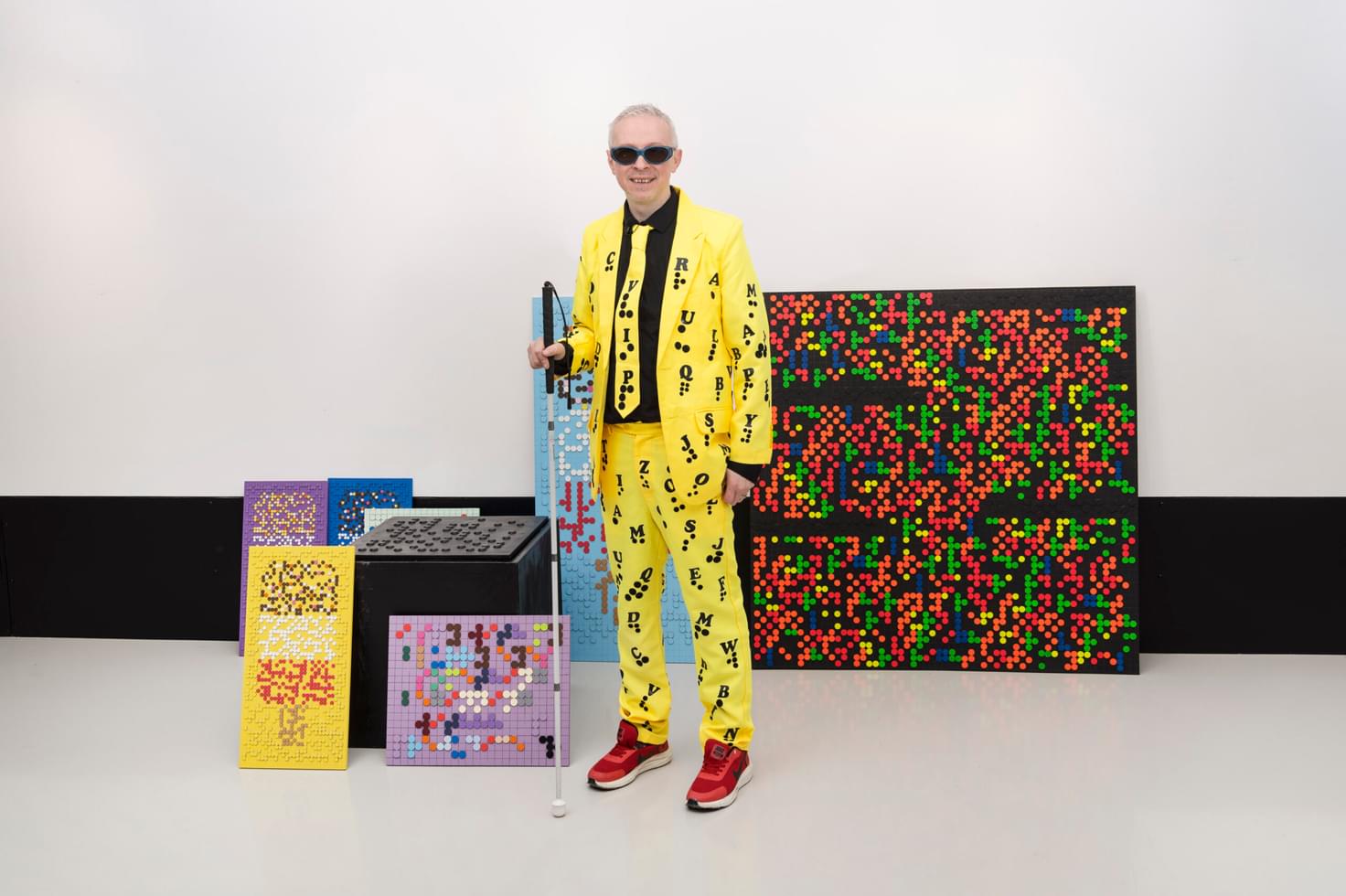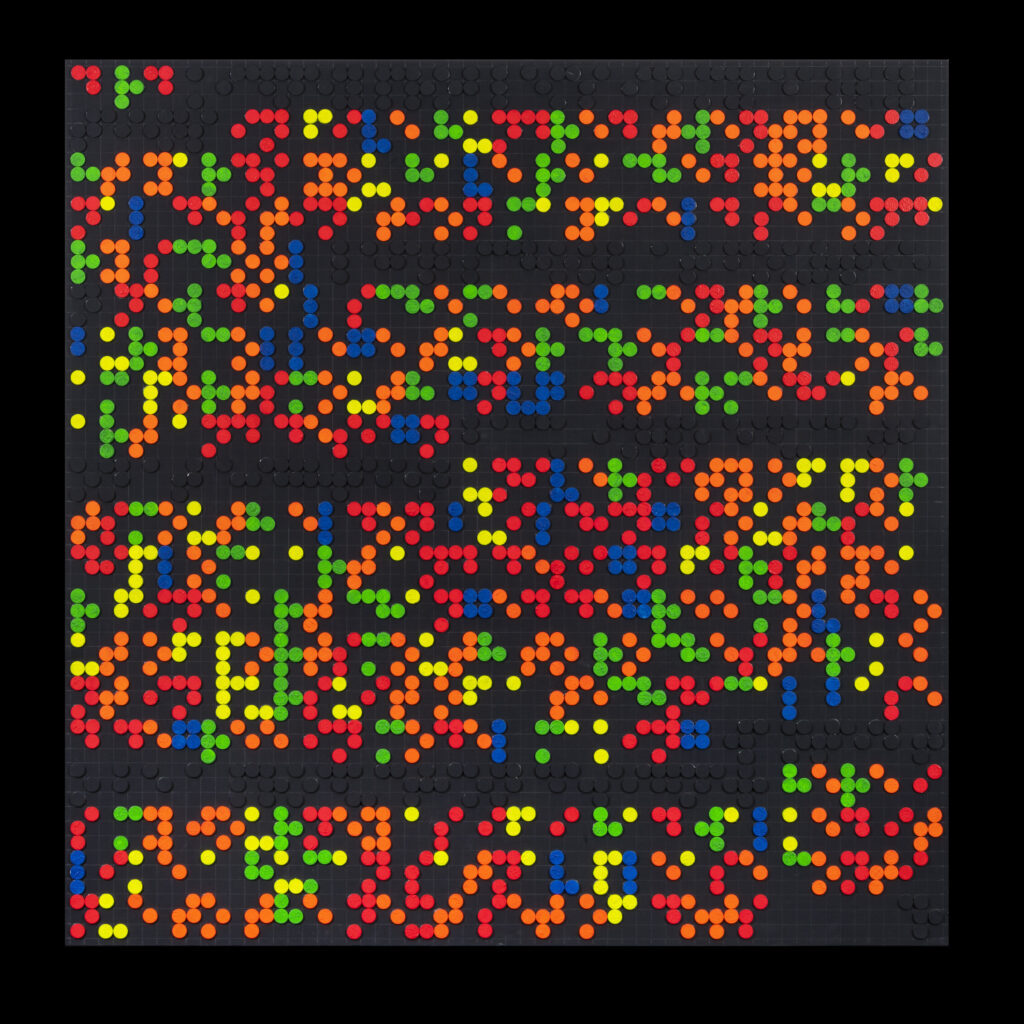
Words by Abi Scaife
When thinking of art, the first thing that might come to mind is large galleries, roped-off paintings and sculptures... but one man is setting out to change that.
Clarke Reynolds, known as the ‘Blind Braille artist’, has recently launched his first solo exhibition in London. Born partially sighted in his right eye, Clarke became an artist when the deteriorating eyesight in his other eye forced him to give up his career.
Today, he retains around 5% sight, meaning he’s registered as severely sighted and uses a white cane. Still, Clarke is an artist, and he has adapted to express himself through his art - and to make it accessible for everyone.

“I've lived two lives one with sight and one without,” Clarke tells Smiley News. “As an artist, and when I start losing my sight, I realised how inaccessible it [was] to go into a gallery. It feels like I don't belong. Sometimes you may get a touch tool, but then you have to wear gloves, or you get a bit of audio description. But it's quite patronising.”
At Clarke’s exhibition ‘The Power of Touch’ at Quantus Gallery in Shoreditch, he was determined to make it accessible to everyone - as well as give sighted people a chance to experience what it is like to live with limited sight.
“For me, because I work in braille to tell stories through my art, the idea of touching art, even for the sighted community … it kind of brings something different,” explains Clarke. “[My art] was made to be touched and to have conversations.”
Clarke’s art is made up of braille, made out of enlarged, colourful dots that are designed to be touched and experienced as much as they are seen. Unlike traditional braille, Clarke created a colour-coded system so that a sighted person could learn braille. This is meant to be touched and felt by everyone, with no restrictions.
By combining the two, Clarke has created something new, and incredible.

To make the exhibition even more incredible, specially made glasses were donated by the charity The Vision Foundation, so that sighted visitors can see and experience the world the way Clarke does, with only 5% vision.
“It's really hard to explain how we see so they're … not perfect,” explains Clark. “For me, I describe how I see like looking underwater. Every day is a new day … and these glasses represent that. It's really interesting to hear conversations with people with the glasses on because I don't physically see my artwork. I only see my art [through the] engagement it has so that's why I love talking to strangers at my exhibition because that's how I see me - and for them to understand how I kind of see is really interesting.”
Clarke has also been going into schools around his local area to teach them more about his experience as the blind braille artist, and about how he experiences the world. Here, he teaches braille, talks about sight loss, and helps to break down barriers by discussing the stigma that is attached to sight loss with a new generation of people.
“If you teach those kids at the start about how to appreciate art through touch and get close to it, then you don't have to have barriers up,” he explains. “My art was selling for thousands of pounds in this exhibition … and yet people were touching it.
"They were scared to touch at the start because they saw the label and ‘Oh my god this art's worth a fortune’ - I said no. The idea is to touch the art. People are buying it because there's a story behind touching the art - it’s an experience.”

As for the legacy Clarke hopes to create through his art? It can all be boiled down to one word.
“It’s about empathy. I mean, empathy is a key word,” Clarke says. “[People] come to my exhibition, and they've looked at the art and engaged with the art and they realise that sight loss is more than just black and white.
"They learn empathy towards what sight loss is and then go home and discuss it with their grandchildren, kids, nieces, nephews - talk about it.”
If you’re interested in supporting people who experience blindness on a daily basis, you can donat emoney or volunteer with The Vision Foundation. If you’re interested in supporting Clarke and his work, you can do so through his website.